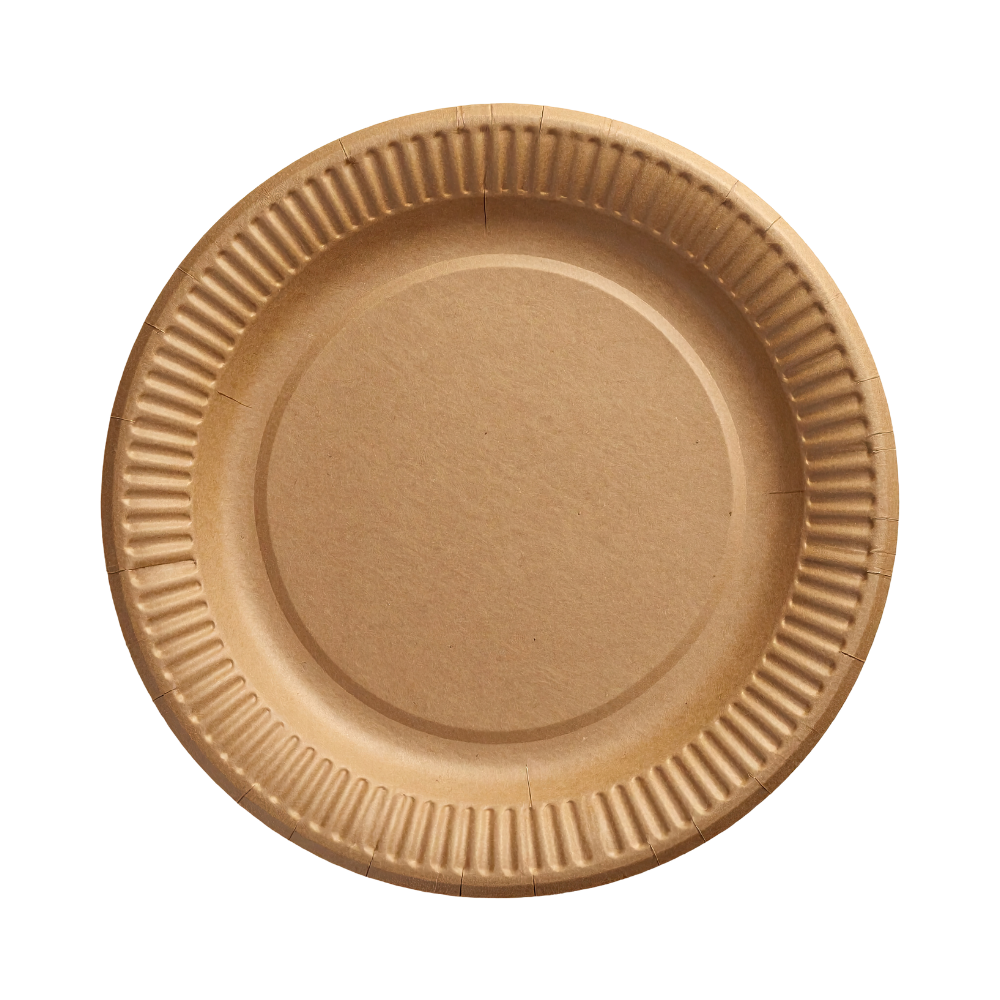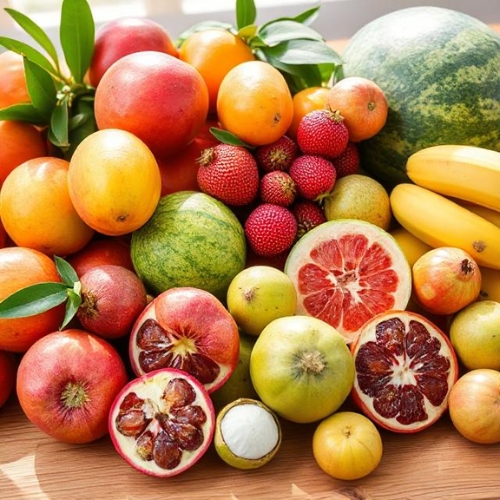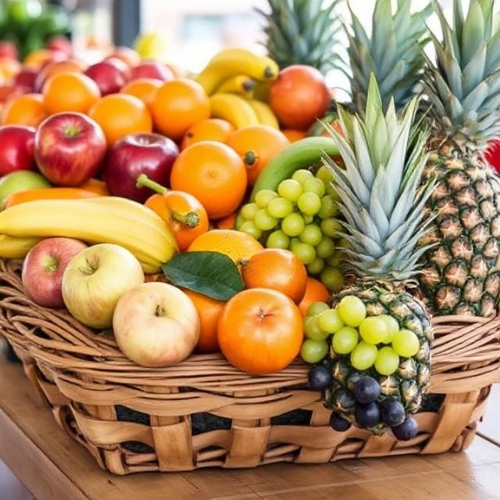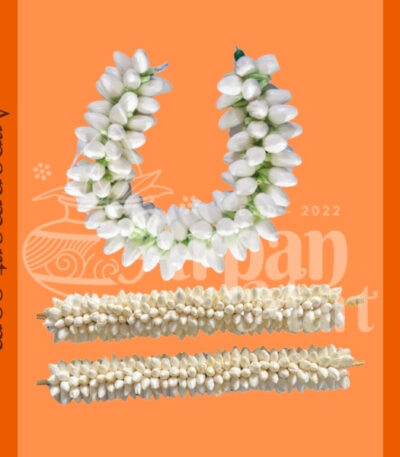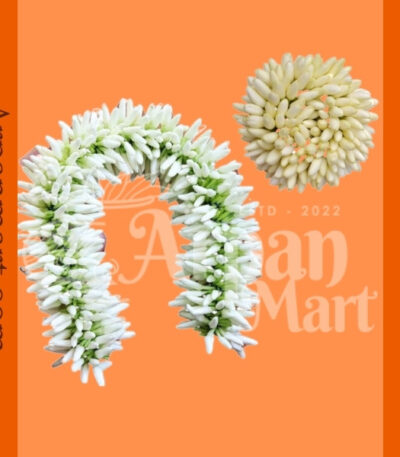Filter by price
By Weight
Categories
Showing 337–348 of 1126 results
Flower Veni – Gajra – Arali – 00815
$18.00Arpan Mart Presents fresh flower veni – gajra Arali for an Indian wedding is a breathtaking hair adornment that symbolizes purity, grace, and tradition.
The fresh flowers, chosen for their delicate petals and sweet fragrance, are often meticulously arranged in layers, with jasmine’s white purity paired with the vibrant hues of roses or marigolds, symbolizing love, joy, and prosperity. The veni is not only a visual masterpiece but also carries the soothing aroma of fresh blooms, surrounding the bride with an aura of tranquility and elegance.
The fresh blooms not only elevate the visual appeal but also infuse the atmosphere with a soft, fragrant aura, creating an enchanting presence around the bride as she moves gracefully through her wedding rituals.
A fresh flower veni is more than just an accessory; it is a celebration of femininity, cultural heritage, and the serene beauty of nature, making the bride’s presence even more radiant and memorable on her wedding day.
Flower Veni – Gajra – Jasmine – 00810
$18.00Arpan Mart Presents fresh Flower Veni – Gajra for an Indian wedding is a breathtaking hair adornment that symbolizes purity, grace, and tradition.
The Flower Veni – Gajra, chosen for their delicate petals and sweet fragrance, are often meticulously arranged in layers, with jasmine’s white purity paired with the vibrant hues of roses or marigolds, symbolizing love, joy, and prosperity. The veni is not only a visual masterpiece but also carries the soothing aroma of fresh blooms, surrounding the bride with an aura of tranquility and elegance.
The fresh blooms not only elevate the visual appeal but also infuse the atmosphere with a soft, fragrant aura, creating an enchanting presence around the bride as she moves gracefully through her wedding rituals.
A Flower Veni – Gajra is more than just an accessory; it is a celebration of femininity, cultural heritage, and the serene beauty of nature, making the bride’s presence even more radiant and memorable on her wedding day.
Flower Veni – Gajra – Jasmine Rose Petals – 00812
$18.00Arpan Mart Presents fresh flower veni – gajra Jasmine Rose Petals for an Indian wedding is a breathtaking hair adornment that symbolizes purity, grace, and tradition.
The fresh flowers, chosen for their delicate petals and sweet fragrance, are often meticulously arranged in layers, with jasmine’s white purity paired with the vibrant hues of roses or marigolds, symbolizing love, joy, and prosperity. The veni is not only a visual masterpiece but also carries the soothing aroma of fresh blooms, surrounding the bride with an aura of tranquility and elegance.
The fresh blooms not only elevate the visual appeal but also infuse the atmosphere with a soft, fragrant aura, creating an enchanting presence around the bride as she moves gracefully through her wedding rituals.
A fresh flower veni is more than just an accessory; it is a celebration of femininity, cultural heritage, and the serene beauty of nature, making the bride’s presence even more radiant and memorable on her wedding day.
Flower Veni – Gajra – Jathi Mullai – 00814
$20.00Arpan Mart Presents fresh flower veni – gajra Jathi Mullai for an Indian wedding is a breathtaking hair adornment that symbolizes purity, grace, and tradition.
The fresh flowers, chosen for their delicate petals and sweet fragrance, are often meticulously arranged in layers, with jasmine’s white purity paired with the vibrant hues of roses or marigolds, symbolizing love, joy, and prosperity. The veni is not only a visual masterpiece but also carries the soothing aroma of fresh blooms, surrounding the bride with an aura of tranquility and elegance.
The fresh blooms not only elevate the visual appeal but also infuse the atmosphere with a soft, fragrant aura, creating an enchanting presence around the bride as she moves gracefully through her wedding rituals.
A fresh flower veni is more than just an accessory; it is a celebration of femininity, cultural heritage, and the serene beauty of nature, making the bride’s presence even more radiant and memorable on her wedding day.
Flower Veni – Gajra – Kanakambaram – 00816
$20.00Arpan Mart Presents fresh flower veni – gajra Kanakambaram for an Indian wedding is a breathtaking hair adornment that symbolizes purity, grace, and tradition.
The fresh flowers, chosen for their delicate petals and sweet fragrance, are often meticulously arranged in layers, with jasmine’s white purity paired with the vibrant hues of roses or marigolds, symbolizing love, joy, and prosperity. The veni is not only a visual masterpiece but also carries the soothing aroma of fresh blooms, surrounding the bride with an aura of tranquility and elegance.
The fresh blooms not only elevate the visual appeal but also infuse the atmosphere with a soft, fragrant aura, creating an enchanting presence around the bride as she moves gracefully through her wedding rituals.
A fresh flower veni is more than just an accessory; it is a celebration of femininity, cultural heritage, and the serene beauty of nature, making the bride’s presence even more radiant and memorable on her wedding day.
Flower Veni – Gajra – Mullai – 00813
$18.00Arpan Mart Presents fresh flower veni – gajra Mullai for an Indian wedding is a breathtaking hair adornment that symbolizes purity, grace, and tradition.
The fresh flowers Mullai , chosen for their delicate petals and sweet fragrance, are often meticulously arranged in layers, with jasmine’s white purity paired with the vibrant hues of roses or marigolds, symbolizing love, joy, and prosperity. The veni is not only a visual masterpiece but also carries the soothing aroma of fresh blooms, surrounding the bride with an aura of tranquility and elegance.
The fresh blooms not only elevate the visual appeal but also infuse the atmosphere with a soft, fragrant aura, creating an enchanting presence around the bride as she moves gracefully through her wedding rituals.
A fresh flower veni is more than just an accessory; it is a celebration of femininity, cultural heritage, and the serene beauty of nature, making the bride’s presence even more radiant and memorable on her wedding day.
Flower Veni – Gajra – Nandivardanam – 00811
$20.00Arpan Mart Presents fresh Flower Veni – Gajra for an Indian wedding is a breathtaking hair adornment that symbolizes purity, grace, and tradition.
The fresh flowers, chosen for their delicate petals and sweet fragrance, are often meticulously arranged in layers, with jasmine’s white purity paired with the vibrant hues of roses or marigolds, symbolizing love, joy, and prosperity. The veni is not only a visual masterpiece but also carries the soothing aroma of fresh blooms, surrounding the bride with an aura of tranquility and elegance.
The fresh blooms not only elevate the visual appeal but also infuse the atmosphere with a soft, fragrant aura, creating an enchanting presence around the bride as she moves gracefully through her wedding rituals.
A fresh flower veni is more than just an accessory; it is a celebration of femininity, cultural heritage, and the serene beauty of nature, making the bride’s presence even more radiant and memorable on her wedding day.
Fresh White Pumpkin
Call for PriceRelish the subtle flavor and health benefits of Fresh White Pumpkin—a versatile vegetable perfect for soups, curries, and refreshing beverages.
Fresh Yellow Pumpkin
Call for PriceEnjoy the wholesome goodness of Fresh Yellow Pumpkin—naturally sweet, nutrient-rich, and perfect for a variety of savory and sweet recipes.
Online Sports Nutrition and Natural Dietetics.
Chances are there wasn't collaboration, communication, and checkpoints, there wasn't a process agreed upon or specified with the granularity required. It's content strategy gone awry right from the start. Forswearing the use of Lorem Ipsum wouldn't have helped, won't help now. It's like saying you're a bad designer, use less bold text, don't use italics in every other paragraph. True enough, but that's not all that it takes to get things back on track.
The villagers are out there with a vengeance to get that Frankenstein
You made all the required mock ups for commissioned layout, got all the approvals, built a tested code base or had them built, you decided on a content management system, got a license for it or adapted:
- The toppings you may chose for that TV dinner pizza slice when you forgot to shop for foods, the paint you may slap on your face to impress the new boss is your business.
- But what about your daily bread? Design comps, layouts, wireframes—will your clients accept that you go about things the facile way?
- Authorities in our business will tell in no uncertain terms that Lorem Ipsum is that huge, huge no no to forswear forever.
- Not so fast, I'd say, there are some redeeming factors in favor of greeking text, as its use is merely the symptom of a worse problem to take into consideration.
- Websites in professional use templating systems.
- Commercial publishing platforms and content management systems ensure that you can show different text, different data using the same template.
- When it's about controlling hundreds of articles, product pages for web shops, or user profiles in social networks, all of them potentially with different sizes, formats, rules for differing elements things can break, designs agreed upon can have unintended consequences and look much different than expected.
This is quite a problem to solve, but just doing without greeking text won't fix it. Using test items of real content and data in designs will help, but there's no guarantee that every oddity will be found and corrected. Do you want to be sure? Then a prototype or beta site with real content published from the real CMS is needed—but you’re not going that far until you go through an initial design cycle.


 Ganesh Chaturthi
Ganesh Chaturthi Krishnashtami
Krishnashtami Varalaxmi Puja
Varalaxmi Puja Navratri Special
Navratri Special Karva Chauth
Karva Chauth Diwali
Diwali Ayyappa Deeksha
Ayyappa Deeksha









